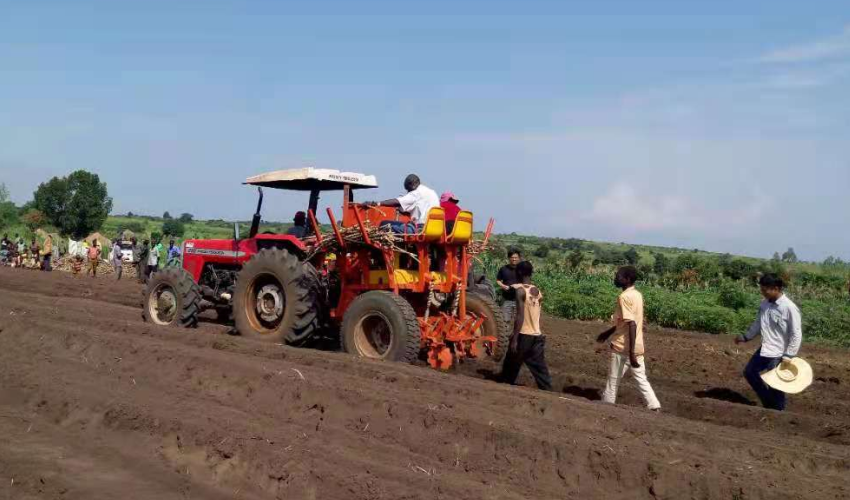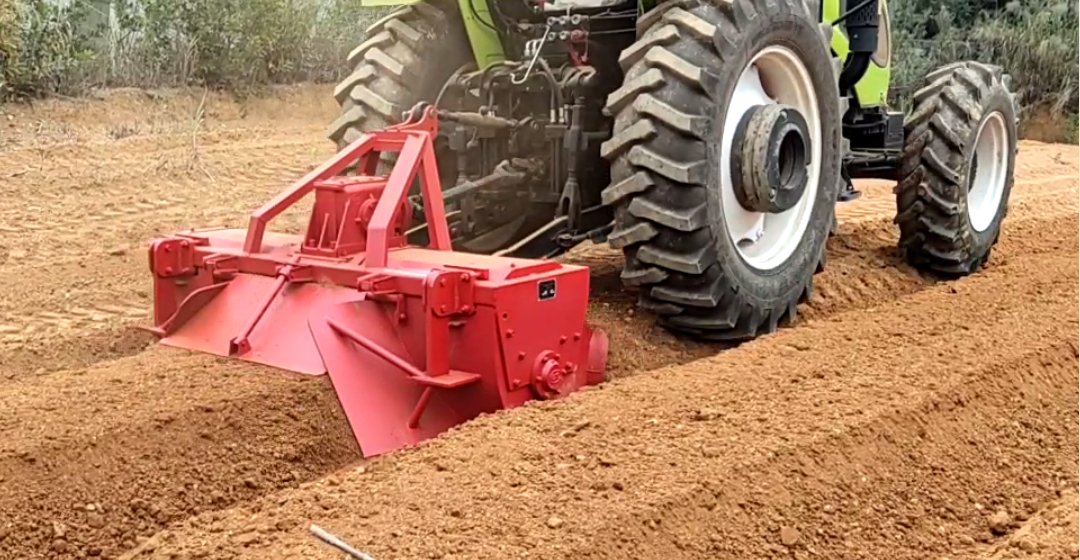From Planting to Harvest: 5 Key Tips to Boost Your Cassava Yields!
Share
Cassava is a relatively well-known "convenience crop". It is easy to grow. As long as it is planted, it can grow very well without special management. However, in most cases, the planting method is unreasonable. Not only does cassava grow small, but also, In addition, it is time-consuming and labor-intensive, and it is a waste of fertilizer, so we also need skills to grow cassava. With nearly 30 years of experience in cassava farming, TAGRM has 5 tips to save time and fertilizer while also increasing cassava yields.
1. Deep plowing and ridge
Deep plowing and ridge planting is the most commonly used planting method. The reason is very simple. The fruit (root) of cassava grows in the soil. The soil is softer, and the cassava roots are more likely to swell and stretch in the soil. Some points need our special attention in deep plowing and ridge raising. Let me give you some points.

TAGRM Heavy Furrow Plower
1.1. The main points of deep cultivation
Deep plowing is not unlimited digging down, and it is generally about 40 cm deep. This depth can easily be reached with TAGRM's deep tillage plows. The plowshare is inserted into the ground at a depth of about 30 cm to 40 cm, and the effect of turning the ground can be achieved.
1.2. The main points of the ridge
The main purpose of ridge raising is to increase the soil space for cassava growth, and there are three specific points.
1.2.1 The height of the ridge is generally 25 cm to 30 cm. It does not need to be too high. Too high is a waste of soil, and it is too short. The soil environment for the growth of cassava roots is not sufficient.
1.2.2 The width of the ridge is about 40 cm, and the length of the ridge is as long as the land is, so it is more convenient to plow, and there is no need to turn around frequently.
1.2.3 One row of cassava is planted on a ridge, and the cassava is planted in the center of the ridge. The distance between the cassava and the cassava is about 50 cm, because most of the cassava roots will grow along the direction of the ridge, and the distance between the cassava is too small. Not conducive to the extension of cassava roots.
 TAGRM Ridge Planting Cassava Planter
TAGRM Ridge Planting Cassava Planter
2. point fat to promote growth
It is a good habit to plant crops and apply base fertilizer, but applying base fertilizer in cassava fields is complicated work, time-consuming, and mainly requires a lot of fertilizer. Some of the base fertilizer is mixed on the soil surface. It will be washed away by the rain, and the fertilizer will be wasted in vain. To make full use of fertilizer, we need to bury the fertilizer into the soil and use it at the point to provide nutrients to the cassava to the greatest extent. The specific method is as follows.
2.1. Sowing the ditch
When planting cassava, a seed ditch will be opened at the top of the ridge, and the depth of the ditch is about 15 cm (if you use a large rake to open the seed ditch, the depth of the rake will be enough), and then spread farmyard manure in the seed ditch. The fertilizer needs those well-rotted farmyard manures or some plant ash that has been left to stand. If you don't like the trouble, just sprinkle some compound fertilizer directly, or don't sprinkle it at all, it doesn't have much impact.
2.2. point fertilizer planting
When planting cassava, a little fertilizer is the most important part. The so-called point fertilizer is to sprinkle a handful of compound fertilizer between the cassava seeds and the cassava seeds after the cassava seeds are planted (you can use farmyard manure instead, but the amount should be doubled). about a quarter of. The fertilizer should not touch the cassava seeds to prevent the cassava seeds from being burned.
Note: It is not necessary to spread fertilizer in the seed furrow, but the fertilizer must be applied.
3. Grasp the depth of sowing and the distance between species
The planted cassava should not be too deep, generally half the height of the ridge, which is about 15 cm deep. The distance between the cassava seed and the cassava seed is the distance between the two feet of an adult, about 50 cm. It should not be too close. If it is too close, it will affect the extension of the cassava root.
After planting the cassava seeds, use a large rake to hook the soil on one side of the ridge to bury the cassava seeds. Finally, use a rake to gently rake the top of the ridge to smash or rake the clods into the ditch, so that the cassava Planting is complete.
After planting, the cassava does not need to be watered. Generally, the humidity of the soil itself is enough. Moreover, since the planting time is mid-February, the sun is not strong at this time, and the soil has a certain humidity. There will be a period of the rainy season, which is good to rehydrate the soil.
4. Weeding in advance
Whenever the cassava grows, there will be a lot of weeds growing in the cassava fields, and some of the weeds in the cassava fields will submerge the cassava. The ability of weeds to grab fertilizer is very strong, which seriously affects the growth of cassava. We have no choice but to hoe weeds manually, but this is time-consuming and labor-intensive. Therefore, when we plant cassava now, we all start weeding before the cassava grows. The herbicides used at the time were unable to injure the cassava and also killed the seedlings of weed seeds in the ground.
Just use popular herbicides as herbicides. When spraying herbicides, the spray head should be aligned with the center of the ridge, so that the herbicide spray can cover the entire ridge, so that the herbicide can be fully utilized.
5. point pit top dressing method
Now is the best time to fertilize cassava. I found that many people just spread the fertilizer directly on the surface of the cassava ridge. This method is not correct. First of all, the fertilizer on the soil surface cannot penetrate the soil in time. , If there is no rain for a long time, the fertilizer spread on the soil surface will not be able to provide nutrients to the cassava. Secondly, after the next heavy rain, due to the scouring of the rain, a part of the fertilizer will be washed away and the fertilizer will be wasted. Therefore, when we are topdressing, we must not be covetous of the convenience of the moment, we must use the "point pit topdressing method" for topdressing. The method is very simple. Use a hoe to dig a mud pit between the two cassava seedlings, then sprinkle an appropriate amount of fertilizer into it, and then bury it.
General topdressing twice. The first time is one month after emergence, that is, when the roots begin to form, and the second top dressing is carried out one and a half months apart. Generally topdressing human manure or manure or compost mixed with phosphate fertilizer and turf mud. Pay attention to the application of potassium fertilizer. For plants with yellow leaves and weak seedlings, nitrogen fertilizers should be added. Fertilization should avoid contact with the seed stem and its lower root group. It is best to apply it to about 10 cm on both sides of the seed stem. If it is applied too far, it is not conducive to the absorption and utilization of roots. After application, cover the soil with 5 cm, especially for the application of ammonium nitrate and ammonium bicarbonate, it is necessary to cover it with thick soil.

